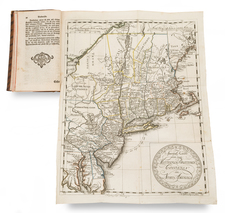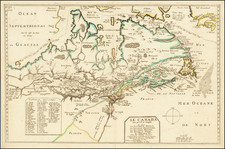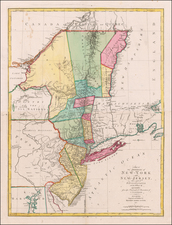First state of Faden's map of Philadelphia, based upon the rare Scull & Heap Plan. When first issued in 1752, the Scull and Heap Plan of Philadelphia was intended to promote William Penn's new city on the Delaware River. When the events of the American Revolution began to heat up, illustrations of the center of the revolt, Philadelphia, were immediately in demand. This demand was soon met by publishers in England, Germany and France with the reissue of the Scull and Heap map, still the most up-to-date cartographic treatment of Philadelphia then available. Holmes' grid plan for the city is shown, situated between the rivers, and numerous outlying 'country seats' are placed and named, with the primitive road system also indicated. Faden updated from the first edition to take into account the changes in the place names and environs of the City since the middle of the Century, and Heap's elevation of the statehouse is moved from the top to the bottom center of the plate. The result of all this is a highly attractive and historic map that shows Philadelphia at the time of the Revolution. Nebenzahl Battle Plans #131; Snyder #46. The present example has been deacidified and remargined, with repairs to tears in the lower right corner and in the center of the map. The island between Hog Island and Mudd Island is unnamed and there southern coastline of the Delaware is incomplete, corresponding with the rare first state of the map. Tooley 69a, Nebenzahl #130, Snyder 47.
William Faden (1749-1836) was the most prominent London mapmaker and publisher of the late-eighteenth and early-nineteenth centuries. His father, William Mackfaden, was a printer who dropped the first part of his last name due to the Jacobite rising of 1745.
Apprenticed to an engraver in the Clothworkers' Company, he was made free of the Company in August of 1771. He entered into a partnership with the family of Thomas Jeffreys, a prolific and well-respected mapmaker who had recently died in 1771. This partnership lasted until 1776.
Also in 1776, Faden joined the Society of Civil Engineers, which later changed its name to the Smeatonian Society of Civil Engineers. The Smeatonians operated as an elite, yet practical, dining club and his membership led Faden to several engineering publications, including canal plans and plans of other new engineering projects.
Faden's star rose during the American Revolution, when he produced popular maps and atlases focused on the American colonies and the battles that raged within them. In 1783, just as the war ended, Faden inherited his father's estate, allowing him to fully control his business and expand it; in the same year he gained the title "Geographer in Ordinary to his Majesty."
Faden also commanded a large stock of British county maps, which made him attractive as a partner to the Ordnance Survey; he published the first Ordnance map in 1801, a map of Kent. The Admiralty also admired his work and acquired some of his plates which were re-issued as official naval charts.
Faden was renowned for his ingenuity as well as his business acumen. In 1796 he was awarded a gold medal by the Society of Arts. With his brother-in-law, the astronomer and painter John Russell, he created the first extant lunar globe.
After retiring in 1823 the lucrative business passed to James Wyld, a former apprentice. He died in Shepperton in 1826, leaving a large estate.









![[ Middle British Colonies Map ] Pensilvania Maryland and Virginia](https://storage.googleapis.com/raremaps/img/small/98228.jpg)


![(Three Days at Gettysburg) Map of the Battlefield of Gettysburg July 1st, 2nd, 3rd 1863. . . [Three Maps]](https://storage.googleapis.com/raremaps/img/small/101769.jpg)
![[ New York Harbor ] Entree de la Riviere D'Hudson depuis la Pointe Sandy Hook jusqu'a New York les Bancs, les Sondes les Guides &c. . . 1778](https://storage.googleapis.com/raremaps/img/small/78970.jpg)
